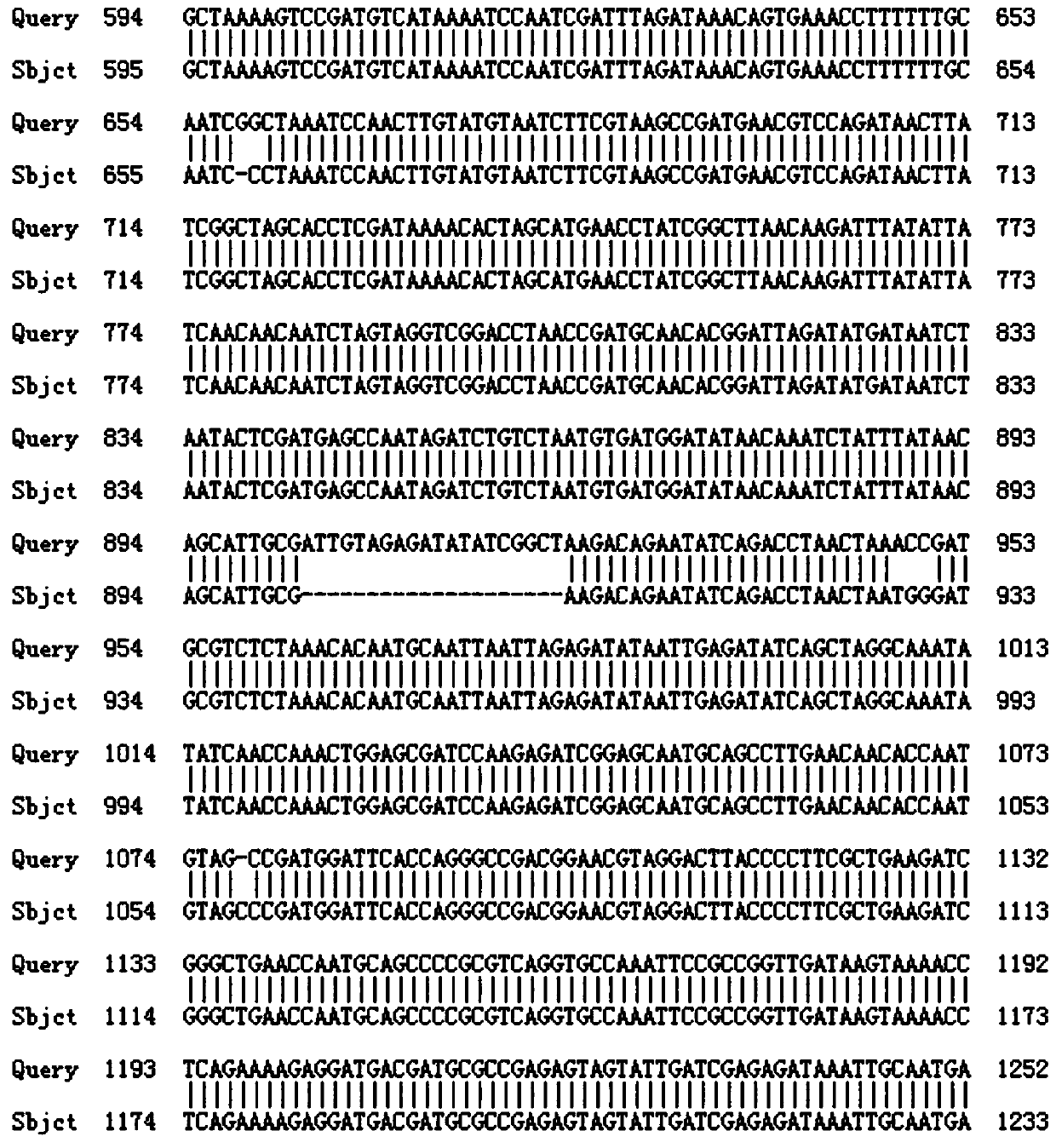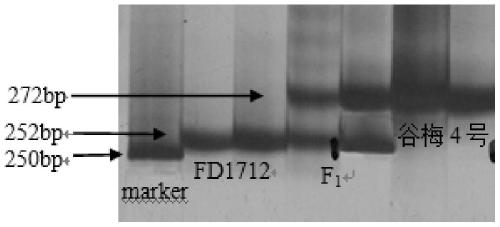A molecular marker closely linked to rice blast resistance gene, primer and application thereof
A rice blast and molecular marker technology, applied in the field of molecular markers and primers, can solve the problems of reduced yield and smaller rice seeds, and achieve the effects of reducing labor land, shortening breeding cycle, and improving breeding efficiency.
- Summary
- Abstract
- Description
- Claims
- Application Information
AI Technical Summary
Problems solved by technology
Method used
Image
Examples
Embodiment 1
[0025] Obtaining the nucleotide sequence shown in SEQ ID NO: 3 and the nucleotide sequence shown in SEQ ID NO: 4 by the special primer pair for identification of rice blast resistance traits
[0026] 1.1 Parental Genome Amplification
[0027] The parents used to create the rice recombinant inbred line (recombinant inbred line, RIL) population were Gumei 4 and FD1715 bred by Anhui Fengda Seed Industry Co., Ltd., respectively. FD1715 is the female parent, which is not resistant to rice blast; Gumei 4 is the male parent, which is highly resistant to rice blast.
[0028] Genomic DNA of parental leaves was extracted by CTAB method, and primers were designed according to the sequence published by Yiwen Deng (Yiwen Deng, et al.Epigenetic regulation of antagonistic receptors confers rice blast resistance with yield balance[J].2017.355(6328):962). The nucleotide sequence shown in SEQ ID NO: 5 and the nucleotide sequence shown in SEQ ID NO: 6 are composed of the nucleotide sequence sho...
Embodiment 2
[0036] Correlation verification between the amplified product of QK1 and rice blast resistance traits
[0037] 432 F 2 The substitute material is the test object. Genomic DNA was extracted from the rice to be tested by the alkaline cooking method, and the specific steps were the same as in Example 1. Perform PCR amplification experiments. The PCR reaction system is: 10X Buffer 2μl (containing Mg 2+ ), dNTP 0.4μl (10mM), the nucleotide sequence shown in SEQ ID NO: 3 and the nucleotide sequence shown in SEQ ID NO: 4 each 2μl (5μM), genomic DNA extracted from the rice to be tested 1μl , taq enzyme 0.5μl (5U / μl), the rest is ultrapure water, the reaction volume is 20μl, and a drop of mineral oil is added dropwise to cover. The reaction program of PCR amplification is: 94°C for 5 minutes; 94°C for 60s, 53.5°C for 60s, 72°C for 60s, 35 cycles; 72°C for 10min.
[0038] PCR amplified products were analyzed by 6% polyacrylamide gel electrophoresis, stained by rapid silver staining...
PUM
 Login to View More
Login to View More Abstract
Description
Claims
Application Information
 Login to View More
Login to View More - R&D
- Intellectual Property
- Life Sciences
- Materials
- Tech Scout
- Unparalleled Data Quality
- Higher Quality Content
- 60% Fewer Hallucinations
Browse by: Latest US Patents, China's latest patents, Technical Efficacy Thesaurus, Application Domain, Technology Topic, Popular Technical Reports.
© 2025 PatSnap. All rights reserved.Legal|Privacy policy|Modern Slavery Act Transparency Statement|Sitemap|About US| Contact US: help@patsnap.com



